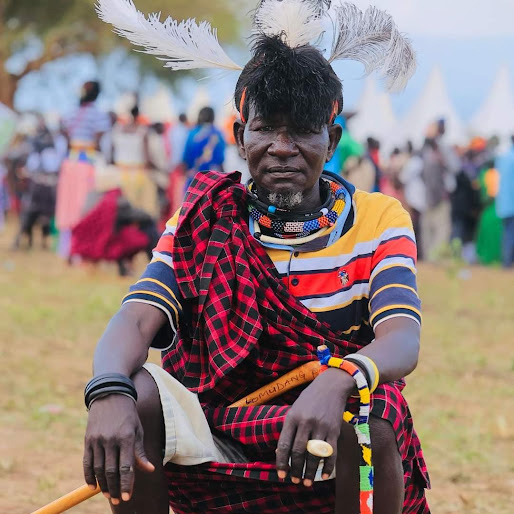Imagine the Land Cruiser idling at dawn. The air smells of wet grass; a lilac sky rolls out above the acacias. Crack—hooves sprint past as the first light touches a river that might soon churn with wildebeest.
Masai Mara weather decides every drama here: where lions stalk, when rivers swell, which track your guide dares.
Know the mood swings of the sky, and you’ll step into the Reserve when its heartbeats sync with yours.
| Month | Avg Max °C | Avg Min °C | Rainfall (mm) | Rainy Days | One-Line Mood |
| Jan | 29 | 16 | 78 | 13 | Warm, green, surprisingly quiet |
| Feb | 30 | 16 | 55 | 13 | Hottest shots, short bursts of rain |
| Mar | 30 | 17 | 95 | 17 | Humid build-up to long rains |
| Apr | 29 | 16 | 121 | 22 | Storm-fed rivers, cinematic skies |
| May | 28 | 16 | 65 | 18 | Lush, fewer tourists, cool nights |
| Jun | 27 | 15 | 32 | 11 | Fresh mornings, grass thinning |
| Jul | 28 | 15 | 11 | 9 | Dry, crisp—Migration arrives |
| Aug | 28 | 15 | 24 | 10 | River-crossing fireworks continue |
| Sep | 29 | 16 | 29 | 10 | Last Migration surges, golden light |
| Oct | 30 | 16 | 48 | 12 | Warm, dust rises, first rumble of rain |
| Nov | 29 | 16 | 110 | 16 | Short rains, newborn antelope season |
| Dec | 29 | 16 | 104 | 15 | Emerald plains & dramatic cloud banks World Weather & Climate Information |
Sun breaks the horizon like a flashbulb; dew steams off the grass. With moderate showers the plains glow emerald, and big cats lounge on termite mounds, half-closing their eyes between hunts. Tourism is low—your guide kills the engine, and silence swallows the world.
Heat hums above the savanna (your water bottle sweats too). Short, sudden squalls freshen the dust, then blue returns. Photography is a joy—crisp air, sharp contrast, and cubs still small enough to play in morning shade.
Clouds stack higher each afternoon. You smell rain minutes before it arrives—warm, metallic. Tracks begin to slick; vehicles dance a little in the mud. Birders grin: migrants cram every fig tree in sight.
Lightning spider-webs the night sky; frogs celebrate. The heaviest downpours of the year turn rivers coffee-brown, yet predators patrol the road verges where grass bends under water-drops. Bring gaiters and the spirit of adventure.
Storms slacken. You wake to clean air and carpets of wildflowers. Fewer jeeps, fatter zebra, cooler nights—perfect for hot-water-bottle stories around the campfire.
First light reveals shorter grass, easier sightings. Mornings bite with 15 °C chill, so wrap in a fleece before accepting coffee from your guide. By noon the sky burns sapphire and elephants ghost across open plains.
Dry season clicks in. Hooves drum distant ridges as the Great Migration’s scouts appear. Riverbanks bake, crocs wait, and every crossing feels like rolling dice with fate. Pack dust covers for your lens.
Full Migration frenzy. Mara Triangle thunders beneath a million wildebeest; you feel vibration through the seat frame. Evenings, a mild breeze tempers the day’s heat—ideal for camp-fire wine and bragging rights.
Crowds thin, predators stay. Golden grass waves like wheat, and low rainfall means broad, fordable rivers—stellar for balloon safaris. Photographers chase back-lighting till memory cards sigh.
Heat edges upward. Skies deepen to cobalt; then—one afternoon—the first clap of short rains. Dust becomes petrichor in seconds. Game remains plentiful, with newborn warthogs wiggling tails in puddles.
Short rains paint the plains neon green; impala fawns wobble on new legs while hyenas cruise for easy meals. Roads can be sticky but wildlife drama peaks—pack patience and mud-ready boots.
Cloud towers stack again, lightning flickers at dusk. Migratory birds fill acacias with color. Holiday travelers arrive, yet vast grasslands swallow crowds. End the year with a thunder-lit leopard silhouette.
| Season | Why Go | Star Zones |
| Long Dry (Jul–Oct) | Peak Migration, river crossings, minimal rain | Mara Triangle & Musira Marsh for crossings; Olare Motorogi for big-cat drama |
| Short Dry (Jan–Feb) | Green backdrops, thin crowds, clear light | Central Plains near Talek for relaxed lions; Naboisho Conservancy for intimate walks |
| Long Rains (Mar–May) | Lush scenery, birding bonanza, lower rates | Higher ground in Mara North to dodge mud; river loops for hippo action |
| Short Rains (Nov–Dec) | Baby boom, dramatic skies, photography magic | Eastern grasslands for antelope nurseries; Mara River bends for croc ambush scenes |
Seasonal wildlife flow mirrors the weather rhythms above—dry months tighten animal clusters near rivers, while rainy months scatter them across fresh pasture.
Masai Mara doesn’t just host wildlife; it scripts the soundtrack—thunder, wind, hooves, the soft tick of dust on canvas. Choose your month, claim your front-row seat, and we’ll get you there before the clouds decide the next act.
Send us a message, pack that wide-brim hat, and let’s chase the perfect sky together.
Give Us a call or arrange a meeting with one of our Travel Consultants to discuss more your Kenya Safari Adventure



Send an Email
Rm 2B Ground Floor, Tetu Appartments, Milimani Lane, Nairobi.
© 2025 Serengeti Mara Experts LLC All Rights Reserved